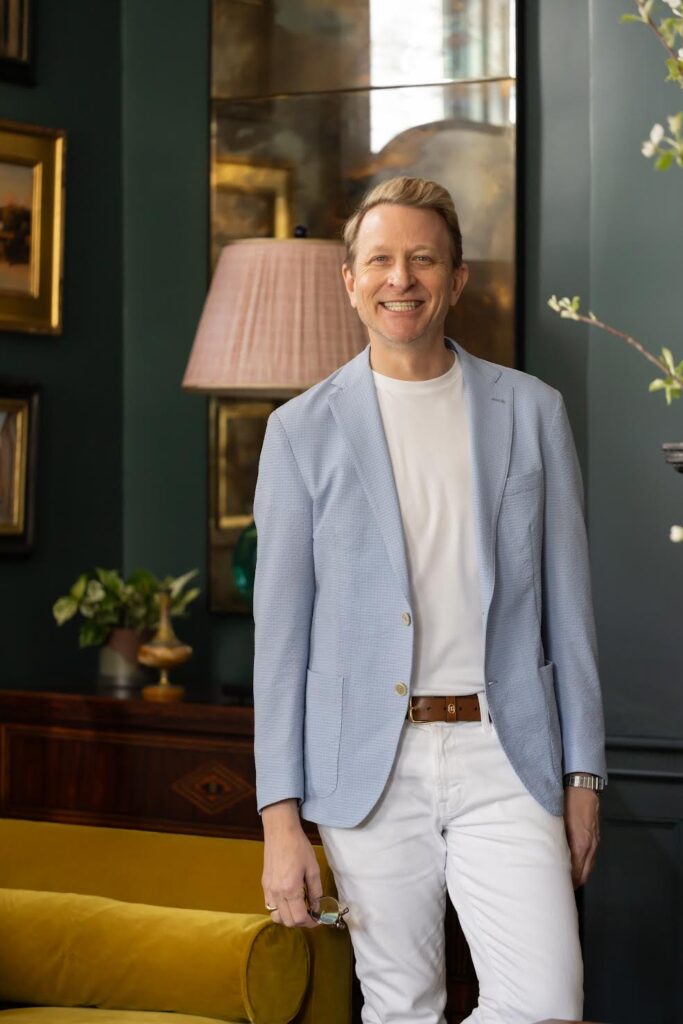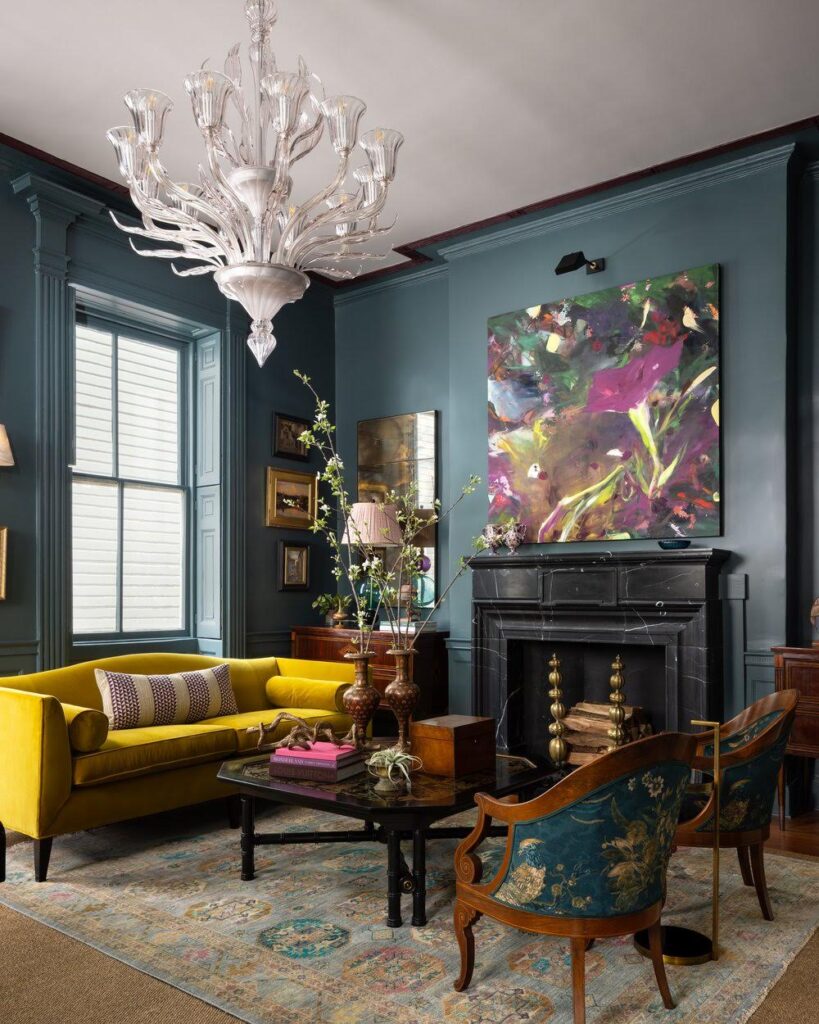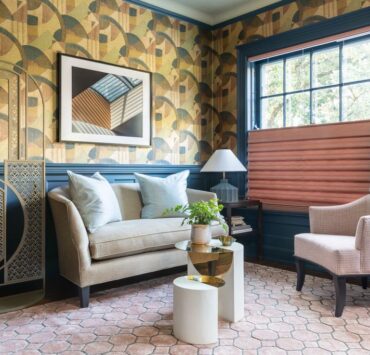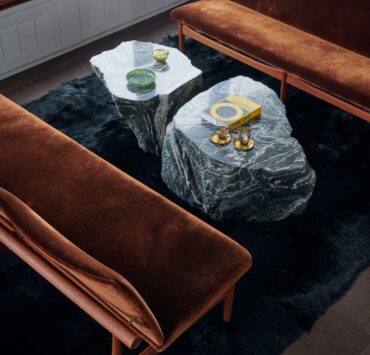Our new ongoing series, Champions of Design Entrepreneurship, which offers a rare, intimate look into the minds of industry trailblazers. Featuring interviews and first-person accounts from renowned designers, architects, artisans, and industry veterans, each story is a reflection of how they interpret what it means to be both a ‘champion’ and an ‘entrepreneur’ in our field. This seventh installation features Charleston, South Carolina-based interior designer and retailer Michael Mitchell:

The many layers of Michael Mitchell
Charleston, South Carolina-based interior designer and retailer Michael Mitchell is in near constant motion. The night before we chatted, he’d just returned from Montana, where he’s redoing a mountain house for some longtime clients, and he’d been up late reviewing proposals. While we talked, he triaged a barrage of emails and texts.
“I feel like I’ve worked every day for the last eight months. I’ve been really racing around here lately,” Mitchell says. “There’s lots and lots going on. The last three or four months have been weird because of the election and now, all of a sudden, everybody wants their house done.”

In between design projects and running his retail showroom on King Street in Charleston, Mitchell is rebranding from Mitchell Hill to Michael Mitchell, a change prompted by the end of a longtime business partnership. The new brand will officially launch in March.
“The business name was Mitchell Hill, but my last name is not Hill, and it was confusing to our clients, to the vendors, to everybody because I’ve always been the face of the company. Without (my partner), it didn’t make sense to continue with the name,” Mitchell explains.
‘Mix and layer’
Mitchell describes his style as “twisted traditional,” a rich aesthetic that layers antiques and traditional furnishings with modern pieces. “My projects are deep and interesting, and you have to spend time in one of my rooms in order to catch everything. It never looks like a truck just backed up and unloaded a roomful of furniture. If I do a project over a year, it will look like we’ve been traveling 10 to 15 years acquiring the furnishings.”
In short, “I just mix and layer, mix and layer, mix and layer,” he says. To prove the point: In a current project he’s using 13 fabrics in a single room.

He operates his business similarly, layering a successful retail showroom in with his residential and commercial interior design work.
Mitchell has worked in 36 states and travels about one week out of each month. In addition to the house in Montana, he currently has projects in California, Connecticut, Florida, Ohio, Michigan and New Jersey, “and, of course, we’re doing houses and projects all over Charleston, too,” he says.
In a recent favorite project, he says he transformed what an architect envisioned as a “white-box modern farmhouse” in the Northeast into “a Scottish country house that feels like it was plopped down in the middle of the property in the 1820s.” “It’s gorgeous,” he says. “I couldn’t be more proud of that house.”
The Michael Mitchell team of 14 includes junior and senior designers, a project manager, an inventory manager, an operations manager, controller, assistants and retail sales associates.
“But everybody overlaps,” Mitchell says. “I’ll tell you one thing about my team: Everybody’s got their oars in the water and, if you don’t, I’ll throw you off the boat because I can’t have that drag.” He holds himself to the same standard. “I’ll take the trash out. I’ll do anything around here. It’s all a matter of time: What do I have time to do? I’ve done it all. I’ve reset the showroom; I’ve hung art. I’ve got skills: I can do anything from make drapes to change the oil in your car,” he says, acknowledging that he’d rather not make drapes or change oil these days. But he could.
The shopper and the shop
When Mitchell is in Charleston, his time is split between design work and the showroom, which he opened in 2010, originally as a pop-up shop selling art, around the time he was relocating from New York back to Charleston to be closer to family.
The pop-up eventually grew to a 12,000-square-foot retail space. It offers furniture, rugs, lighting, art, paint and wallpaper, accessories and more, both in-store and online, shipping nationwide.

“I’m the Farrow & Ball dealer for this part of the state and also have a rug gallery in my store — we have about 20,000 rugs in stock in between the store and my warehouse. We sell about 12 different lines of upholstery and furniture, and (in total) represent about 450 brands,” he says. “… “We also have a small section where I have candles and all sorts of other wonderful gift items like decanters, serving pieces, host gifts — things you’d buy to take to a party or to treat yourself.”
“… On top of that, I travel to a lot of antique fairs around the globe where I buy both for the store and my projects,” Mitchell says. He says he plans additional travel to Europe and Asia in the coming year or two, shipping more containers back to the showroom “to keep those interesting layers in my store.”
The store is a passion for Mitchell, who has loved shopping since he was a kid. “I don’t care if it’s for clothes, for cufflinks, for lightbulbs, I love to shop,” he says. But the store also benefits his design business, introducing visitors to Charleston to his aesthetic and the resources he brings to residential and commercial projects.
Showing up and giving back
Also layered into Mitchell’s work are his philanthropic efforts, which include everything from fundraising events at the store to working in the kitchen of a homeless shelter.
“So many people write checks, and I do that too, but you have to give time to get rooted in these charities, as well,” he says. “Showing up is important to me.”
Some of his favorite charities include the Hollings Cancer Center at the Medical University of South Carolina, the Roper St. Frances Health Services Center (formerly the Ryan White Wellness Center) and Ronald McDonald House Charities Charleston.

“There are so many people in less fortunate situations,” Mitchell says. “We have the responsibility to help.”
When he can work it in, Mitchell would like to combine his love of art with his philanthropic work, perhaps bringing children into the store for art instruction from various local artists.
“I think that’s something that can get lost in families that might have less money for supplies,” he says. “I’d love to show them how to create and let them be able to explore that side of themselves.”
If we check back in with Mitchell in a year or two, I expect that art project will be underway. As he told me, “I’m good at doing 20 things at once.”



